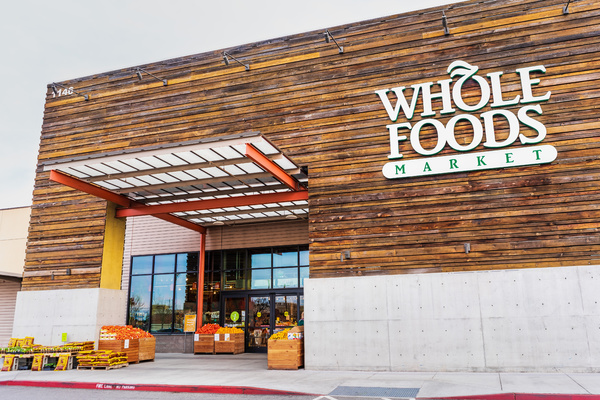
TLDR: Whole Foods tapped into the health food niche when it opened its first store in 1980. Its marketing has since focused on expanding that niche to an ever-wider audience.
So What? Whole Foods’ marketing shows how picking the right market is key to great promotional tactics. This strategy has grown the company far beyond its initial base of “health nuts” to anyone who wants fresh, delicious food.
Whole Foods is a staple of the modern corporate landscape, but the company initially struggled to get funding from investors who thought it was just “a bunch of hippies.”
How did this bunch of hippies create a successful global brand of grocery stores? They succeeded because they knew ordinary Americans wanted healthy, organic, local food.
At a time when most health food stores were small and independent, Whole Foods brought health food to the masses. It generalized the health food niche and in so doing, created a massive market.
Whole Foods’ marketing relies on several strategies:
- Generalizing a niche
- Commitment to a cause
- Constant upgrades
- High product standards
- Consumer education
Whole Foods’ strategy works. Its 2020 revenue topped $385 billion.
Generalizing a Niche
When Whole Foods was founded in the 1980s, supermarkets were everywhere, but health food stores were a novelty. Most health food stores were small, independent, and local. They served a niche audience.
By making a supermarket-sized health food store, Whole Foods generalized the health foods niche. This was a gamble, but it paid off as the niche became wildly popular.
This strategy — “generalizing a niche” — can be useful in several ways:
- Low competition
- Better economies of scale
- Stimulating consumer desire
The first business to generalize a niche will face little competition. There were no other supermarket-sized health food stores at the time, so Whole Foods was only competing with small stores that had fewer products.
Larger operations tend to benefit from big economies of scale compared to smaller operations. That’s why large stores that serve a niche will have lower per-unit operating costs than competitors.
Creating a large store for a niche will create visibility for that niche and stimulate desire in consumers that had never before considered it. Before Whole Foods, consumers may have considered buying health food, but didn’t because they only wanted to shop at big supermarkets.

Commitment to a Cause
From day one, Whole Foods has been committed to sustainable, local, organic food. This sets it apart from large, corporatized brands that only stand for profits.
Having a cause means you can sell your business by selling your cause. This comes across as authentic and drives brand loyalty.
Consumers that support a cause will also be motivated to support your store exclusively. Your brand may come to be seen as an indicator of status or even a virtue signal.
Constant Upgrades
Many of Whole Foods’ older, smaller stores are still in operation, but they continue to expand productivity.
Whole Food accomplishes this by constantly upgrading and renovating stores. This allows the company to serve more people and products, and to do it faster and more efficiently.
This strategy creates enormous cost savings while boosting profits. Instead of razing a store to build a new one, Whole Foods continues to build its growth year after year.
It also means fewer interruptions to shopping, so customers can enjoy the same store for decades.
High Product Standards
High quality is its own selling point. Consumers will be willing to pay extra, especially for items they’re putting in (or on) their own bodies.
Consumers who get used to high quality may find themselves unable to purchase anything else. This creates long-term patterns of loyalty.
Whole Foods’ continued commitment to high product standards has attracted and retained millions of customers over the last four decades.
One potential downside to this strategy is the shift in consumer preferences towards inferior goods during times of economic slowdown. On the other hand, this strategy benefits from the opposite shift during economic booms.
Consumer Education
In its best form, advertising is education. Whole Foods knows this, and produces a great deal of educational content for customers. This includes everything from recipes to nutrition data.
Since Whole Foods products are chosen and produced with quality in mind, educating consumers brings good points to the fray. Businesses that sell lower-quality products may not benefit as much from this approach.
Marketing Your Business Like Whole Foods
As obvious as it sounds, the key to marketing lies in your market. Whole Foods succeeded because it found an underserved niche that appealed to a much broader audience.
With this strong foundation, Whole Foods just had to reiterate that healthy, organic, unprocessed foods (i.e., “Whole Foods”) were worth paying a little more.
In marketing your own business, consider what niches you can tap.
If you run an e-commerce business, consider what products might appeal to larger audiences. If you run a gym, consider what training techniques could become the next fad.
Once you have a niche you want to generalize, put your marketing dollars into educating customers about why it’s great.
- Guide your communications through consumer education.
- If your niche reflects some form of social responsibility, commit to the cause.
- Keep your product standards high.
At Media Shower, we help brands build customer engagement strategies to win over customers like Whole Foods does. We know how to communicate with your customers. Click here to try our award-winning content platform for free.
